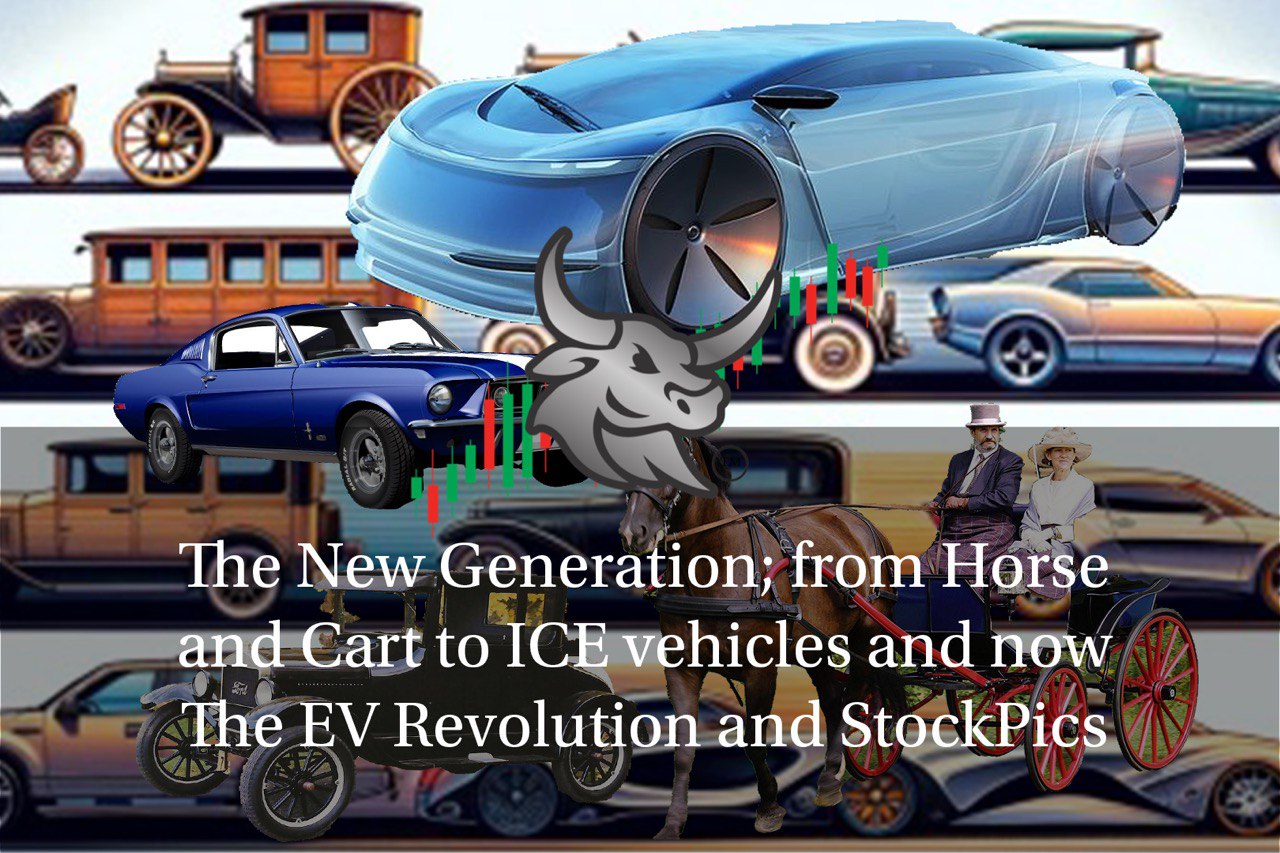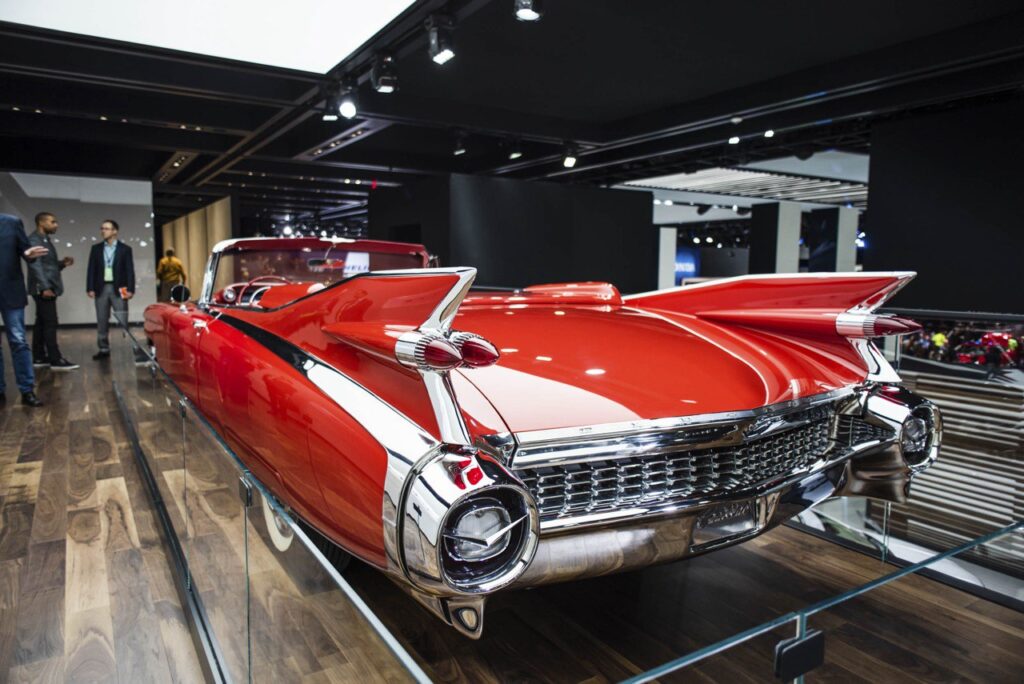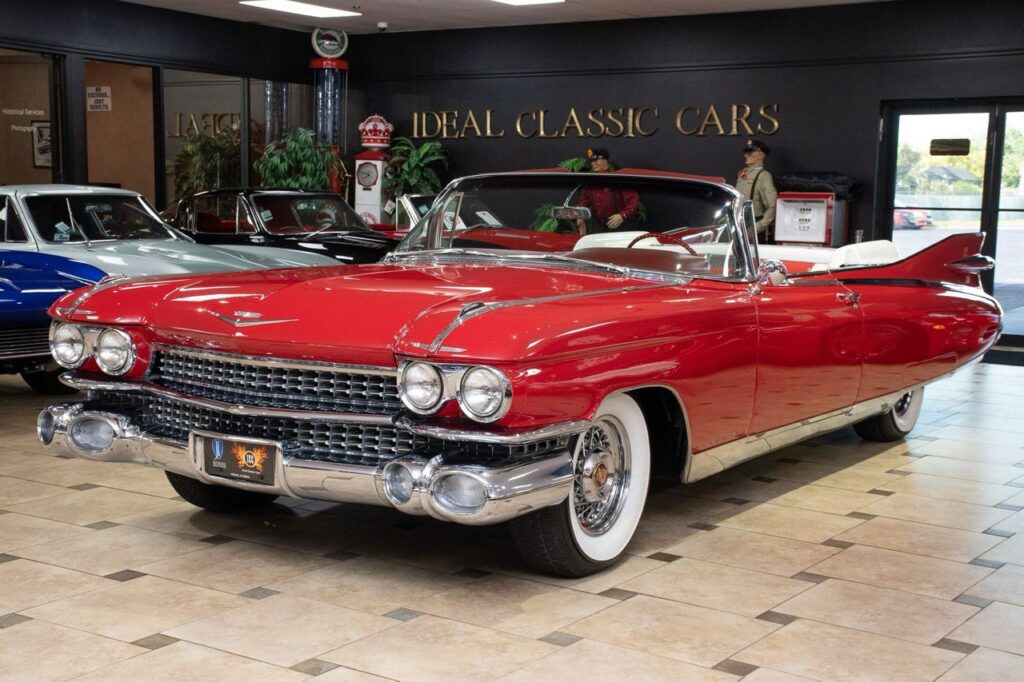3 of 6: A six (6) Article Series On The Evolution of the Automobile, From ICE to EV Powered Vehicles by 2035, The Transformation Years and Dependence on Lithium Powered Batteries!
Introduction: In the mid-20th century, the American automobile industry reached its zenith, symbolizing economic prosperity and technological innovation. This period, often referred to as the golden age of automobiles, saw the United States become a global leader in car manufacturing, influencing cultures worldwide and reshaping the economy. This article explores the profound impact of the American automobile industry during this era, examining how Detroit became the epicenter of automotive innovation, the cultural significance of American cars, and the economic shifts triggered by the oil crises and the establishment of the Petrodollar system.
Chapter 1: The Rise of Detroit Detroit, Michigan, known as the “Motor City,” became the heart of the American automobile industry. Major car manufacturers like General Motors, Ford, and Chrysler established their headquarters and production facilities in Detroit, transforming the city into an industrial powerhouse. The boom in car production created thousands of jobs and attracted a diverse workforce, fueling urban growth and economic prosperity.

Chapter 2: Cultural Significance and Global Influence American cars became symbols of freedom, status, and innovation. The post-World War II economic boom led to increased consumer spending, and cars like the Chevrolet Bel Air, Ford Thunderbird, and Cadillac Eldorado became cultural icons. The car culture permeated American society, influencing everything from drive-in theaters to road trips, and shaped popular culture through movies, music, and literature.
American automobiles also enjoyed global appeal, with their style, power, and innovation admired worldwide. U.S. car manufacturers exported their models to international markets, spreading American culture and lifestyle.

Call me for a free estimate in the Greater Montreal Area.
Chapter 3: Economic Impact and Suburban Expansion The automobile industry’s growth had a significant ripple effect on the American economy. It spurred the development of related industries, including steel, rubber, glass, and oil. The demand for automobiles also led to massive infrastructure projects, such as the construction of highways and bridges, further stimulating economic growth.
The widespread availability of affordable cars facilitated suburban expansion. People could live farther from their workplaces, leading to the development of suburban communities and altering the urban landscape. This suburbanization contributed to the growth of retail businesses, real estate, and other sectors.
Chapter 4: The Oil Crises and Economic Shifts The oil crises of the 1970s exposed the vulnerabilities of an oil-dependent economy. The 1973 oil embargo and the 1979 energy crisis led to fuel shortages, skyrocketing prices, and economic turmoil. These events highlighted the need for more fuel-efficient vehicles and spurred the development of compact cars and alternative energy sources.

During this period, the United States moved away from the gold standard, and the establishment of the Petrodollar system tied the value of the U.S. dollar to oil sales. This shift had profound implications for the global economy, reinforcing America’s economic influence and altering international trade dynamics.
Chapter 5: Decline and Adaptation The American automobile industry faced significant challenges in the latter part of the 20th century. Increased competition from foreign manufacturers, particularly Japanese companies like Toyota and Honda, forced American automakers to innovate and improve quality. The rise of environmental awareness and regulations prompted the industry to develop more fuel-efficient and environmentally friendly vehicles.
Despite these challenges, the American automobile industry adapted and evolved. Innovations in automotive technology, such as the introduction of hybrid and electric vehicles, reflect the industry’s resilience and commitment to progress.
Conclusion: The Legacy of the Golden Age The golden age of the American automobile industry left an indelible mark on the nation’s economy, culture, and global influence. The innovations and economic growth driven by the automobile industry during this period laid the foundation for modern transportation and industrial practices. As we look back on this era, we recognize the enduring legacy of American automotive ingenuity and its impact on the world.

Next in the Series: “Environmental Concerns and Technological Advances: The Evolution of the Modern Automobile” In the next article of this series, we will explore the environmental challenges faced by the automobile industry and the technological advances that have shaped its evolution. We’ll examine the rise of hybrid and electric vehicles, the push for sustainability, and the future of autonomous driving. Join us as we delve into how the automobile industry continues to innovate and adapt in response to global environmental and technological trends.








